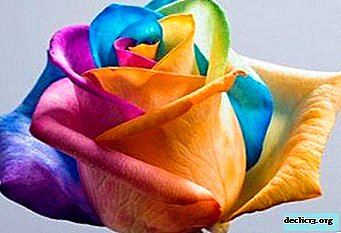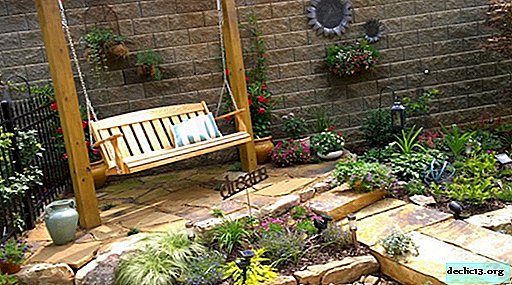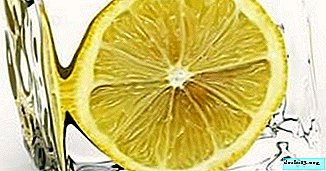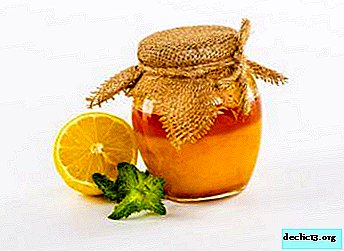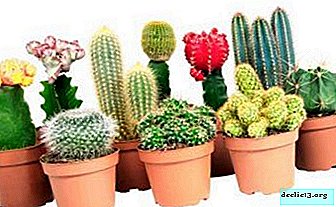Features of the structure of orchids
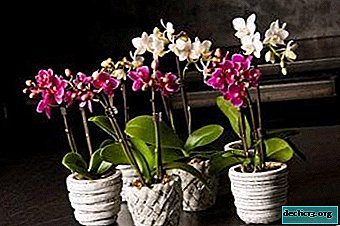 Orchids are very ancient plants. The first representatives of the orchid family appeared on Earth more than a hundred million years ago - among horsetails and ferns, they became the "vanguard" of flowering plants.
Orchids are very ancient plants. The first representatives of the orchid family appeared on Earth more than a hundred million years ago - among horsetails and ferns, they became the "vanguard" of flowering plants.
To this day, these amazing flowers retain in their structure the features inherited from distant antiquity - bizarre inflorescences, powerful dense leaves and aerial roots growing directly from under them.
However, the structure of orchids is no longer a mystery, if we understand the living conditions of these plants.
Types of branching in a flower
Representatives of the orchid family are divided into two large groups depending on the type of branching of the shoots:
- monopodial - the shoot has one growth point and develops vertically;
- sympodial - The main shoot develops horizontally and releases several vertical stems every year.
Monopodial varieties include phalaenopsis, vanda, erangis, vanilla and many more species, mostly wild ones. Orchids with this type of growth have only one main shoot with a crown bud, from which a new pair of leaves develops each year. In the sinuses between the leaves, the so-called generative buds formfrom which peduncles or aerial roots develop.
On the trunk itself, buds can also form, but of a different type - vegetative, from which new shoots develop in the event of the death of the main trunk.
Reference. Sometimes the side shoots grow back even if there is a whole and unscathed main trunk, but this is not common.Sympodial orchid species among cultural varieties are more common than monopodial. These include cattleya, bulbofillums, encyclium, oncidium, dendrobium and many others. These plants are arranged a little more complicated: their main trunk grows horizontally and is most often hidden under the substrate, and on the surface it releases numerous vertical shoots on which bulbs, flowers and other plant organs develop.
The main, horizontal shoot is called the rhizome, or rhizome (it is not a root as such - rather, a "trunk").
Young lateral shoots of orchids are called children. We wrote more about them here.
What parts can the plant be divided into?
Almost all types of orchids have the same "set" of organs:
- leaves;
- stem;
- airy (epiphytic) roots;
- bulbs (pseudobulbs) - only sympodial orchids have them;
- flowers.
However, depending on the type of plant, these organs look and function differently.
Leaves
 The shape and size of the leaves vary depending on the type of plant. In monopodial species, the leaves are large, dense, fleshy - in vivo they serve to accumulate nutrients and moisture. Each annual shoot forms two leaves located opposite each other. The interval between such pairs varies depending on the type of orchid - from a few millimeters to a meter.
The shape and size of the leaves vary depending on the type of plant. In monopodial species, the leaves are large, dense, fleshy - in vivo they serve to accumulate nutrients and moisture. Each annual shoot forms two leaves located opposite each other. The interval between such pairs varies depending on the type of orchid - from a few millimeters to a meter.
In sympodial species, bulbs are stockpiled of nutrients - special formations at the base of shoots, so they do not need large thick leaves. The leaves of plants of this type are thin and narrow. Their size and shape vary greatly: the leaves can be long, strap-like, or small, similar to scales. In orchids, which under natural conditions grow under a bright sun, the leaves will be stiff and leathery, while in species that prefer shade, on the contrary, they will be thin and folded (this increases the surface area that captures sunlight).
Attention! Among orchids, there are both evergreen and deciduous species that discard foliage after a flowering period.Stem
What we are accustomed to call a stalk - a vertical shoot bearing branches and leaves - is present only in monopodial species. In sympodial vertical shoots are branches of the rhizome, or rhizome, which is the main bearing part. Strictly speaking, rhizome - this is the stem of sympodial orchids. Rhizome is attached to the substrate with the help of part of its epiphytic roots.
The stem of orchids can be either very long, like vanilla, or very short, like phalaenopsis. In nature, orchids with a long stem "lean" on trees, attaching to them with aerial roots. At home, they need support.
Aerial roots
Perhaps the most unusual organs of this flower. Orchids are epiphytes, that is, plants that are naturally attached to other plants, usually larger. Epiphytes are not parasites: they do not suck out nutrients from the plant, but simply use it as a “stand”, for example, to get to the upper levels of the forest, where there is more sunlight. Orchids do not root in the soil; they get all the nutrients through photosynthesis, and they squeeze moisture out of the air. It is for this that they need aerial roots.
The roots of orchids are long and quite thick. Over the entire length they are covered with a layer of a special spongy tissue called velamen. It absorbs moisture from the air and protects the root from mechanical damage. In many species of orchids, chlorophyll is contained in the root tissue, and the roots participate in the process of photosynthesis along with the leaves. Moreover, there are species that, during the development process, have lost their leaves, and the roots have fully taken over their functions (such species include, for example, schyloschis).
Read about what roots should have a healthy orchid, read here, and from this article you will learn about what to do if they grow up.
Bulbs and pseudobulbs
 Bulbs are special formations characteristic only for sympodial orchids. Bulba (from lat. Bulbus - bulb) is a thickened meaty shoot in which moisture and nutrients are stored. “Bulba” and “pseudobulb” are essentially the same thing, however, bulbs are called bulb shoots, and pseudobulbs are the same formations of other forms. These forms can be very different: ovoid, oval, even conical and cylindrical - depends on the particular species. The common name for bulbs of any form is tuberidium.
Bulbs are special formations characteristic only for sympodial orchids. Bulba (from lat. Bulbus - bulb) is a thickened meaty shoot in which moisture and nutrients are stored. “Bulba” and “pseudobulb” are essentially the same thing, however, bulbs are called bulb shoots, and pseudobulbs are the same formations of other forms. These forms can be very different: ovoid, oval, even conical and cylindrical - depends on the particular species. The common name for bulbs of any form is tuberidium.
Bulbs are formed from vegetative shoots on the surface of the rhizome. Each such shoot has an apical bud, which at the end of the flowering season begins to thicken and grows into a full-fledged tubreridium. Such formations can be of very different sizes - their diameter varies from a few millimeters to several centimeters. Tuberidia live on average 2-4 years, after which they dry up and die.
Although such an education does not look like an ordinary escape, nevertheless, it is: buds are tied on bulbs, their own leaves grow - small and wide, protecting from damage and drying out. A bulb can even grow aerial roots - this happens quite often.
Flowers
The orchid flower is amazing not only with its beauty, but also with the complexity of the device. At first glance, it has nothing to do with what we are used to understand by “flower”. But this is only at first glance - in the process of evolution, the orchid inflorescence has undergone many transformations, but it is not difficult to recognize familiar elements in it.
The wide, bright “hood” of most orchids is nothing but mutated sepals. They have their own name - sepals. All orchids have three brightly colored sepalswhich can hardly be distinguished from the petals. Shape, color and size depend on the particular species: sepals are usually large and bright, but in some species they are long and elongated, and in some they even grow together, forming a kind of “bowl”.
The sepals alternate with the petals - the actual petals. In many species, sepals and petals vary in color.
In the center of the flower is a unique formation that only orchids have - labellum (another name is the lip). It is a modified loop. The options for the shape, structure, color of labellum are incredibly diverse: it can be solid, consisting of several plates, tubular, cup-shaped, funnel-shaped, or even represent a “brush” of many villi.
The purpose of labellum is to attract pollinating animals. Often it has a special process - a spur filled with nectar. Under natural conditions, orchids are pollinated not only by insects, but also by bats, small rodents and even hummingbirds.
The pestle and stamen in the orchid flower grow together into a single entity - column, under which pollen is collected, collected in special lumps-pollinia.
Important! At home, an orchid can produce seeds, but they are unlikely to germinate - an orchid seed cannot germinate without a certain kind of mushroom, with which these flowers live in symbiosis.Even in the greenhouse this is not an easy task - it is necessary to create such conditions so that the mushroom does not turn out to be stronger and does not kill the seed. Therefore, it makes no sense to wait for fruit from a home orchid: flower lovers propagate these plants in a vegetative way.
We talked about how to care for an orchid during flowering and how to care for an arrow in a separate article.
Orchid is a beautiful and unusual plant, which even in cold latitudes is able to delight with its appearance. But for proper care of her, you need to know her structure and understand the conditions in which these flowers live in nature.









